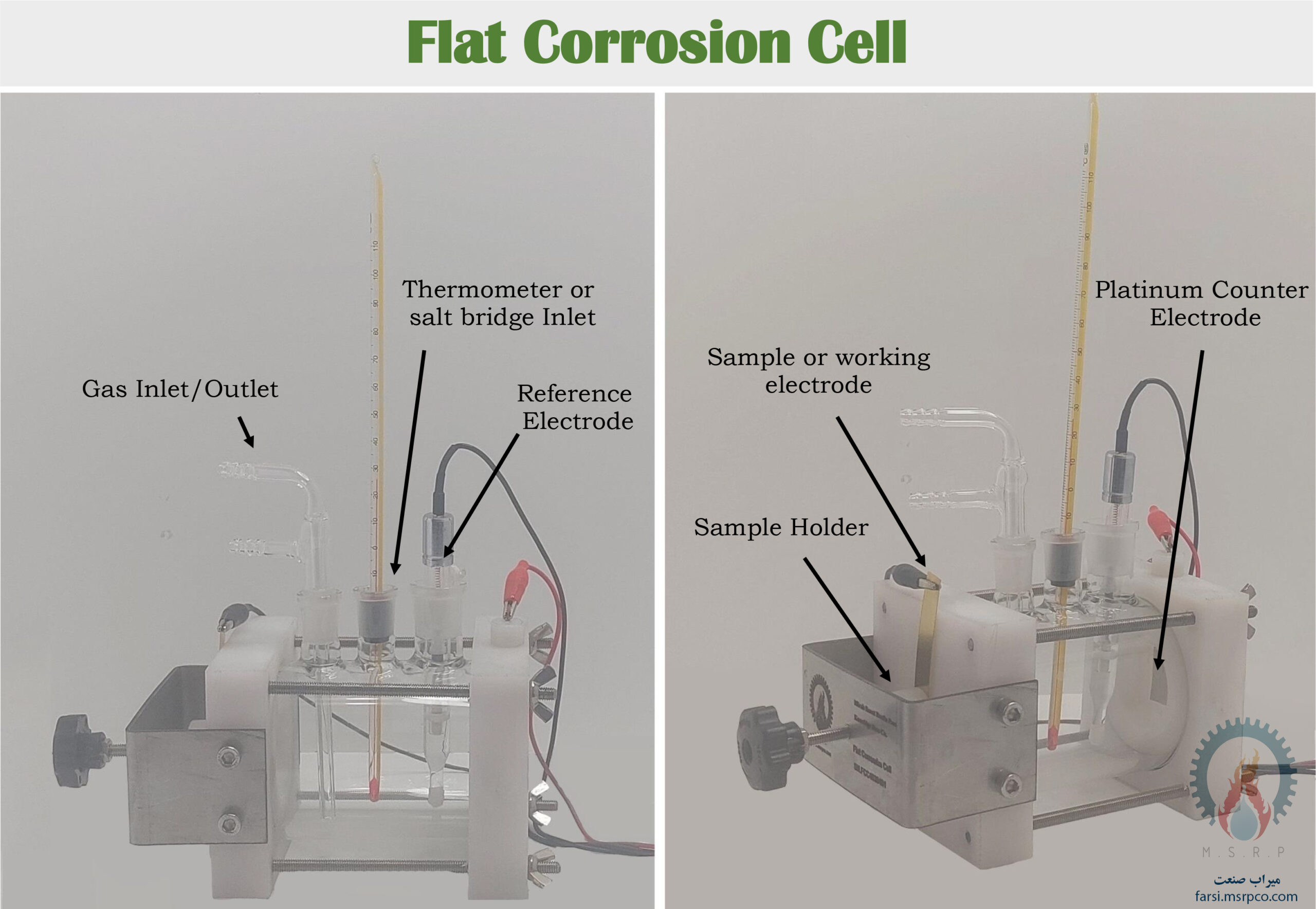The flat cell is a glass cylindrical electrochemical cell (pyrex) with a volume of about 300 cc, which is sealed with PTFE caps at both ends. These cells provide the possibility of performing various electrochemical tests such as polarization test, galvanic corrosion test, electrochemical noise measurement tests, electrochemical impedance measurement and cyclic voltammetry on flat samples. In this cell, the counter electrode, which is in the form of a platinum sheet with dimensions of 25 x 25 mm, is placed directly in front of the working electrode (work sample) and therefore the current is optimally concentrated on the working electrode. The design of this cell allows the maximum surface of the working electrode to be used. This will cause more accurate impedance measurement and minimize the resistance between the Lugging capillary and the working electrode.
The sample should be fixed in appropriate place with the help of the sample holder, and then the cell should be filled with the test solution. Air inlet and outlet, reference electrode and thermometer or salt bridge should be placed in the three openings of the cell. The electrical connections between the working electrode (sample) and the counter on one hand and the impedance or polarization device on the other hand are made with the help of appropriate connections.
The sample is mounted on the o-ring and is held via a sample holder. The sample is in contact with the electrolyte through a hole with an effective surface of 1 square centimeter. By tightening the screws correctly, the electrolyte is well sealed. On the other side of the PTFE base, a platinum sheet is placed as a counter electrode.

